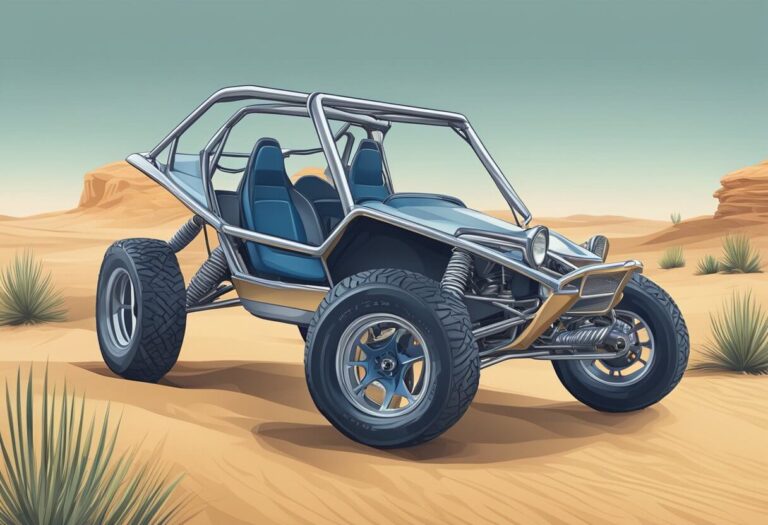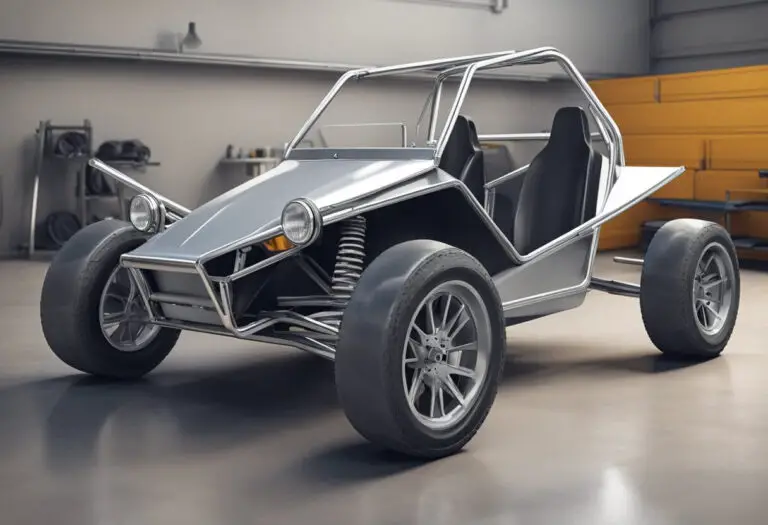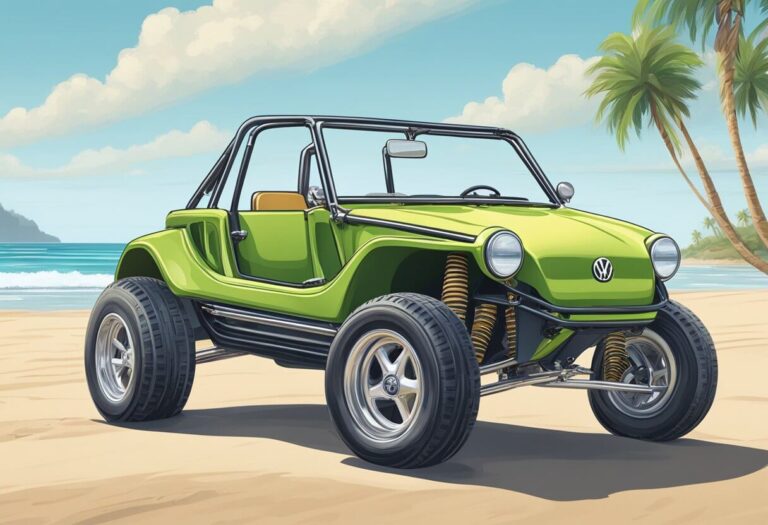Dune Buggy Frame: Understanding Its Components & Construction

Dune buggies are a popular recreational vehicle that are designed to be driven on sand dunes, beaches, and other off-road terrains. One of the most important components of a dune buggy is the frame, which serves as the foundation for the vehicle. A sturdy and well-built frame is essential for ensuring the safety and reliability of a dune buggy.
There are many different types of dune buggy frames available on the market, ranging from basic DIY kits to high-end, professionally-built frames. Some of the most popular frames are made from steel tubing, which is strong, durable, and relatively lightweight. Other materials used for dune buggy frames include aluminum, fiberglass, and carbon fiber.
When selecting a dune buggy frame, it is important to consider factors such as the intended use of the vehicle, the terrain it will be driven on, and the level of customization desired. A high-performance frame may be necessary for competitive racing or extreme off-roading, while a more basic frame may be sufficient for casual recreational use. With the right frame, a dune buggy can provide hours of fun and excitement for drivers of all skill levels.
Design Principles
Material Selection
The choice of materials for a dune buggy frame is critical to its overall performance. The frame must be strong enough to handle the stresses of off-road driving, yet lightweight enough to maintain speed and maneuverability. Common materials used in dune buggy frames include steel, aluminum, and chromoly. Steel is the most common material due to its affordability and strength, but it is also the heaviest. Aluminum is lighter and more expensive than steel, but it is also weaker. Chromoly is a high-strength steel alloy that is both lightweight and strong, making it an ideal choice for dune buggy frames.
Structural Integrity
Structural integrity is a crucial factor in dune buggy frame design. The frame must be able to withstand the forces of off-road driving, including jumps, bumps, and rough terrain. The frame should also be designed to distribute weight evenly to prevent tipping or rolling over. The use of triangulation and cross-bracing can help increase the frame’s rigidity and strength, while also reducing weight.
Aerodynamics
Aerodynamics is an important consideration in dune buggy frame design, as it can greatly affect the vehicle’s speed and maneuverability. The frame should be designed to minimize drag and maximize downforce, allowing the vehicle to maintain stability and control at high speeds. This can be achieved through the use of aerodynamic body panels and spoilers, as well as careful attention to the vehicle’s overall shape and weight distribution.
Frame Types
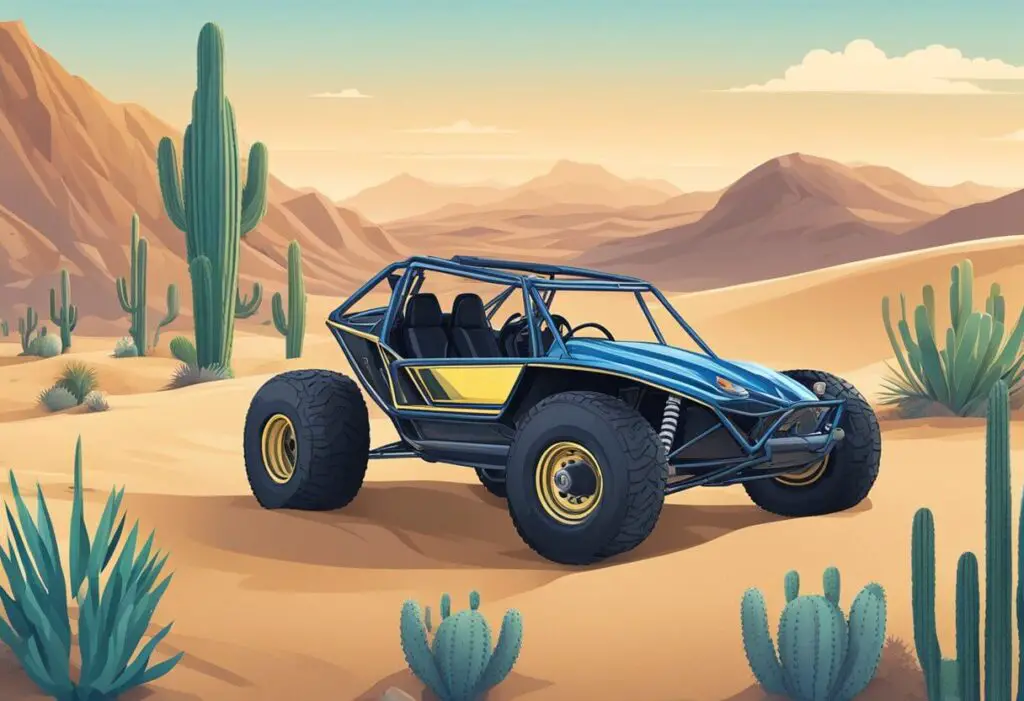
When it comes to dune buggy frames, there are three main types: tubular frames, monocoque chassis, and space frames. Each of these frame types has its own unique characteristics that make it suitable for different purposes.
Tubular Frames
Tubular frames are a popular choice for dune buggies because they are lightweight and offer excellent strength and rigidity. They are made from welded steel tubing and are typically designed in a ladder or space frame configuration. Tubular frames are also relatively easy to modify and customize, making them a favorite among DIY enthusiasts.
Monocoque Chassis
A monocoque chassis is a type of frame that uses the body of the vehicle to provide structural support. This design eliminates the need for a separate frame, resulting in a lighter and more streamlined vehicle. Monocoque chassis are commonly used in high-performance racing vehicles, but they can also be found in some dune buggies.
Space Frame
A space frame is a type of tubular frame that uses a network of interconnected tubes to provide structural support. This design offers excellent strength and rigidity while also being lightweight. Space frames are commonly used in high-performance racing vehicles, but they can also be found in some dune buggies.
Overall, the choice of frame type will depend on the intended use of the dune buggy. Tubular frames are a popular choice for DIY enthusiasts, while monocoque chassis and space frames are more commonly used in high-performance racing vehicles. Regardless of the frame type, it is important to ensure that it is properly designed and constructed to ensure the safety and reliability of the vehicle.
Building Process

Building a dune buggy frame is a challenging but rewarding process that requires careful planning, precision cutting and shaping, expert welding techniques, and meticulous assembly and alignment. This section will provide a brief overview of the key steps involved in building a dune buggy frame, including cutting and shaping, welding techniques, and assembly and alignment.
Cutting and Shaping
The first step in building a dune buggy frame is to cut and shape the various components of the frame. This involves using a variety of tools, including saws, grinders, and drills, to cut and shape the frame components to the desired size and shape. It is important to use precise measurements and cutting techniques to ensure that the frame components fit together properly and that the frame is strong and stable.
Welding Techniques
Once the frame components have been cut and shaped, the next step is to weld them together. Welding is a critical step in the building process, as it determines the strength and stability of the frame. There are several welding techniques that can be used to weld the frame components together, including MIG welding, TIG welding, and stick welding. It is important to choose the right welding technique for the job and to use proper welding techniques to ensure that the welds are strong and secure.
Assembly and Alignment
The final step in building a dune buggy frame is to assemble and align the various components of the frame. This involves fitting the frame components together and aligning them to ensure that the frame is straight and level. It is important to use precise measurements and alignment techniques to ensure that the frame is strong and stable. Once the frame is assembled and aligned, it can be painted and finished to create a unique and stylish dune buggy.
Customization Options
When it comes to customizing a dune buggy, there are several options available to enthusiasts. Some of the most popular customization options include suspension systems, mounting points, and roll cage integration. Below, we’ll take a closer look at each of these options and what they entail.
Suspension Systems
One of the most important aspects of a dune buggy is its suspension system. A good suspension system will help keep the vehicle stable and prevent it from bottoming out on rough terrain. There are several different types of suspension systems available, including independent suspension and solid axle suspension.
Independent suspension systems use individual suspension units for each wheel, which allows for better handling and a smoother ride. Solid axle suspension systems, on the other hand, use a single axle to connect both wheels on an axle, which can provide better traction and stability.
Mounting Points
Another important aspect of a dune buggy is its mounting points. Mounting points are the locations on the vehicle where various components are attached, such as the engine, transmission, and suspension system. When customizing a dune buggy, it’s important to ensure that the mounting points are strong and secure, as they will be supporting the weight of the vehicle and its components.
Roll Cage Integration
Finally, roll cage integration is an important consideration for anyone customizing a dune buggy. A roll cage is a safety feature that provides protection for the driver and passengers in the event of a rollover or other accident. When customizing a dune buggy, it’s important to ensure that the roll cage is integrated into the vehicle’s frame and that it meets all safety standards.
Overall, there are many different customization options available for dune buggies, and enthusiasts can choose from a wide variety of components and accessories to create a vehicle that meets their specific needs and preferences. Whether you’re looking to improve performance, enhance safety, or simply add some style to your dune buggy, there are many options available to help you achieve your goals.
Safety Considerations

When building a dune buggy frame, safety should be a top priority. The following subsections will discuss some of the key safety considerations to keep in mind.
Impact Resistance
One of the most important safety considerations when building a dune buggy frame is impact resistance. The frame must be able to withstand the impact of collisions and other accidents. To ensure that the frame is impact-resistant, builders should use high-quality materials and ensure that the frame is properly reinforced.
Rollover Protection
Another important safety consideration is rollover protection. Dune buggies are often driven on uneven terrain, which can increase the risk of rollovers. To prevent serious injuries in the event of a rollover, the frame should be designed to provide adequate protection to the driver and passengers. This can be achieved through the use of roll bars, roll cages, and other safety features.
Material Fatigue
Finally, builders should be aware of the risk of material fatigue when building a dune buggy frame. Over time, the repeated stress placed on the frame can cause it to weaken and eventually fail. To prevent material fatigue, builders should use high-quality materials and ensure that the frame is designed to distribute stress evenly. Regular inspections and maintenance can also help to identify and address potential issues before they become serious.
Regulations and Standards

Street Legal Requirements
When it comes to dune buggies, street legality is a major concern. In order to be considered street legal, a dune buggy must meet certain requirements set forth by the National Highway Traffic Safety Administration (NHTSA) and the Environmental Protection Agency (EPA). These requirements include having a factory-built body or resembling one, a 17-digit vehicle identification number (VIN) that is assigned by the manufacturer, and all required lighting, such as headlights, taillights, and turn signals.
Additionally, the dune buggy must have a working engine, brakes, seats, and frame, among other things. Safety is the number one priority, and for this reason, there are several requirements when operating a street legal motorized vehicle.
Racing Specifications
For those interested in racing their dune buggies, there are also specific regulations and standards to follow. The International Conference of Sports Car Clubs (ICSCC) has set forth regulations for off-road racing, including dune buggy racing. These regulations cover everything from the minimum weight of the vehicle to the type of tires that can be used.
In addition to the ICSCC regulations, there are also specific rules and guidelines for each individual race. These rules may include requirements for safety equipment, such as helmets and roll cages, as well as specifications for the engine and transmission.
Environmental Compliance
Environmental compliance is another important consideration when it comes to dune buggies. The EPA has set forth regulations regarding emissions for all motorized vehicles, including dune buggies. In order to be considered environmentally compliant, a dune buggy must meet certain emissions standards.
There are also regulations regarding noise pollution, which can be a concern for those driving dune buggies in residential areas. Some states have specific noise regulations for off-road vehicles, and it is important to be aware of these regulations in order to avoid any potential fines or penalties.
Maintenance and Upkeep
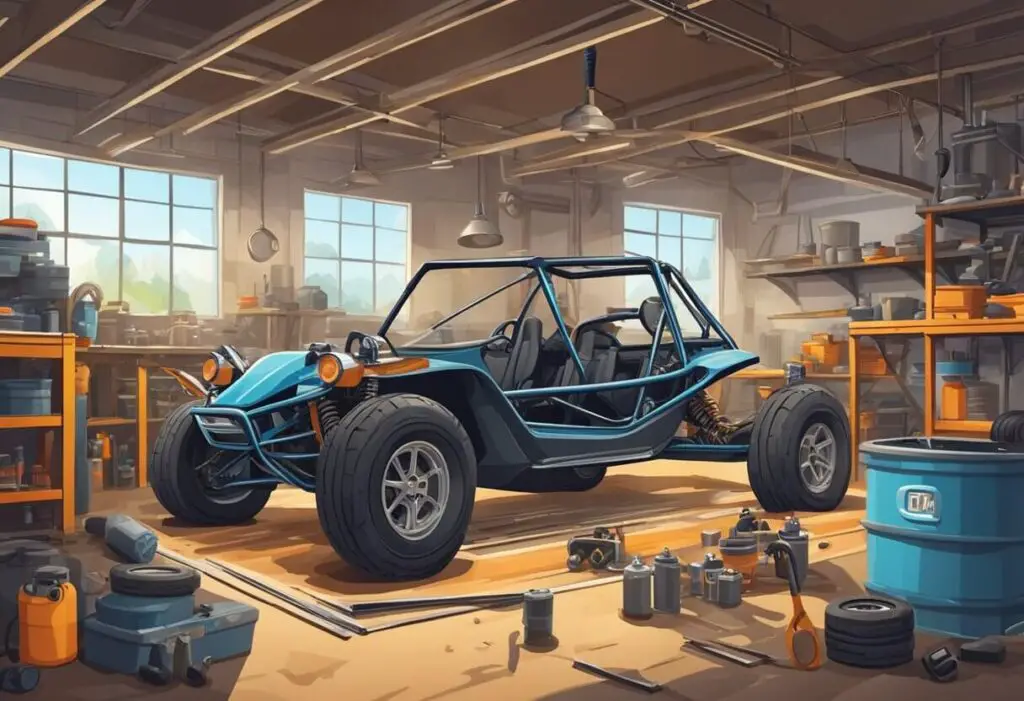
Frame Inspection
Regular frame inspection is essential to ensure that the dune buggy is safe to drive and that the frame is in good condition. During inspection, the owner should look for cracks, bends, or any other signs of damage. Any damage to the frame should be repaired immediately to prevent further damage to the vehicle.
Corrosion Prevention
Corrosion can cause significant damage to the frame of a dune buggy. To prevent corrosion, the owner should keep the frame clean and dry. Regular washing and waxing of the frame can help prevent corrosion. If the frame is exposed to saltwater or other corrosive substances, it should be rinsed thoroughly with fresh water.
Repair and Replacement
If the frame is damaged beyond repair, it should be replaced. Replacement frames are available in the market, and the owner should choose a frame that is compatible with the dune buggy. If the frame is repairable, the owner should take it to a professional welder to ensure that the repair is done correctly.
The owner should also replace any parts that are damaged or worn out. Regular maintenance of the dune buggy can help prevent costly repairs and ensure that the vehicle is safe to drive.
Dune Buggy Frame Kits
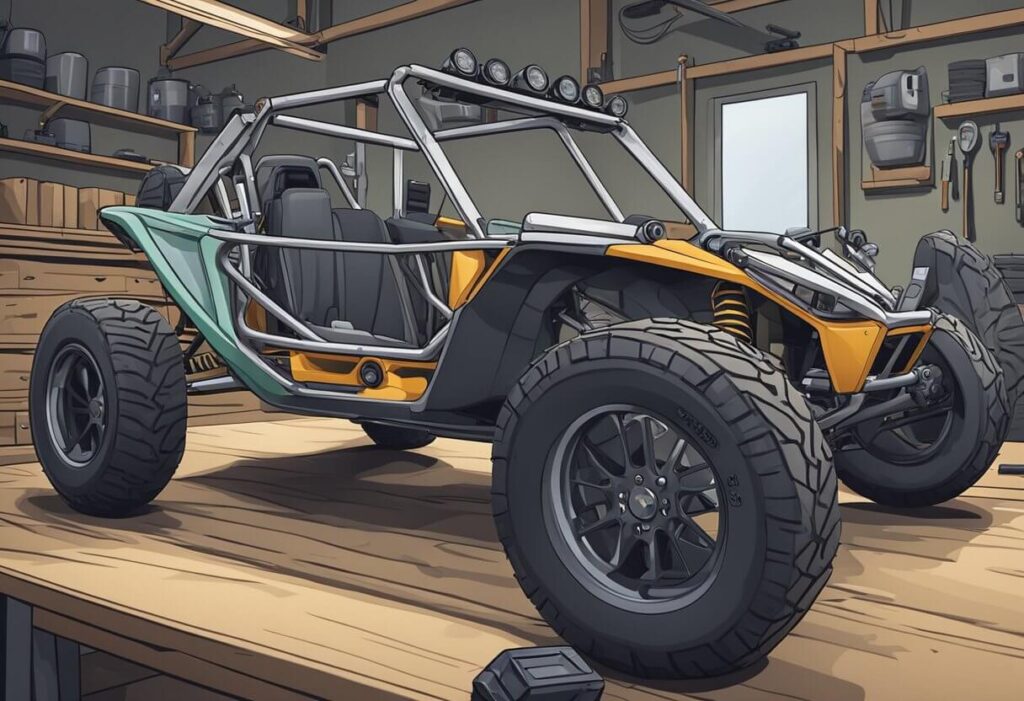
Dune buggies have become increasingly popular in recent years, with more and more enthusiasts seeking to build their own custom buggy. One of the key components of any dune buggy is the frame, which provides the foundation for the entire vehicle. Fortunately, there are a number of companies that offer dune buggy frame kits, making it easier than ever to build your own buggy from scratch.
Pre-Fabricated Kits
For those who are new to building dune buggies, pre-fabricated frame kits can be a great option. These kits come with all of the necessary parts and hardware, and are designed to be easy to assemble even for those with no prior experience. Companies like V-Dub Store and Carolina Dune Buggies offer a range of pre-fabricated frame kits in various sizes and configurations to suit different needs.
Custom Kit Providers
For those who are looking for something more unique, custom kit providers like Berrien Buggy by Acme offer a range of frame kits that can be customized to suit specific needs. These kits are typically more expensive than pre-fabricated kits, but offer greater flexibility and customization options. Berrien Buggy by Acme offers a range of frame kits in various configurations, from “knocked down” weld-it-yourself kits to fully welded frames.
Assembly Guides
Regardless of whether you opt for a pre-fabricated kit or a custom kit, it’s important to have access to good assembly guides to ensure that your build goes smoothly. Most kit providers offer detailed assembly guides and instructions, but it’s also worth checking out online forums and communities for additional tips and advice. Less’s Buggy Shop is a good example of a company that offers a range of assembly guides and resources for those building their own dune buggies.
Overall, building a dune buggy frame can be a fun and rewarding experience, but it’s important to choose the right kit and follow good assembly practices to ensure that your build is safe and reliable. With the right kit and a bit of patience, anyone can build their own custom dune buggy from scratch.
Innovation and Future Trends

Lightweight Materials
Innovation in dune buggy frame design has led to the use of lightweight materials such as aluminum and carbon fiber. These materials offer a high strength-to-weight ratio, which enhances performance and reduces fuel consumption. The use of lightweight materials also reduces the overall weight of the dune buggy, which enhances stability and maneuverability.
Modular Designs
Modular designs have become increasingly popular in the dune buggy frame industry. Modular designs allow for the customization of the frame to suit the needs of the user. The use of modular designs also reduces the cost of production and maintenance. The modular design allows for easy replacement of parts, which reduces downtime and increases the lifespan of the dune buggy.
Electric Dune Buggy Frames
Electric dune buggy frames are becoming more common as the world moves towards cleaner energy sources. The use of electric frames reduces the environmental impact of the dune buggy and reduces fuel costs. Electric frames also offer a smoother and quieter ride, which enhances the overall driving experience.
In conclusion, innovation in dune buggy frame design has led to the use of lightweight materials, modular designs, and electric frames. These innovations have led to enhanced performance, reduced fuel consumption, and reduced environmental impact. The future of dune buggy frame design is bright, and we can expect to see more innovations in the coming years.

